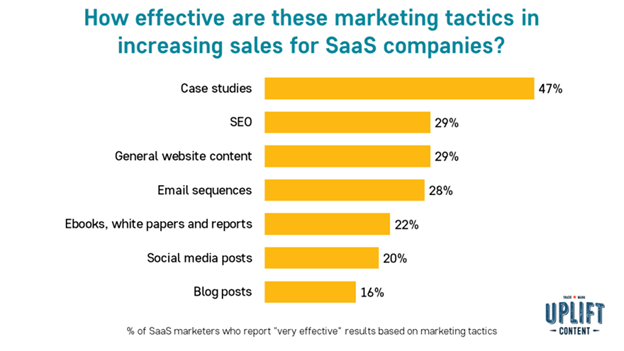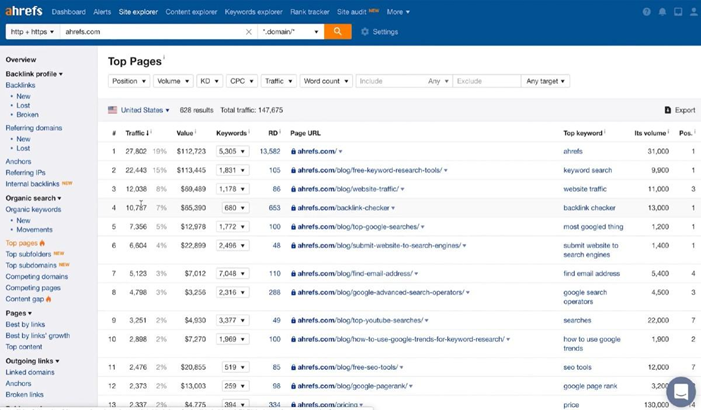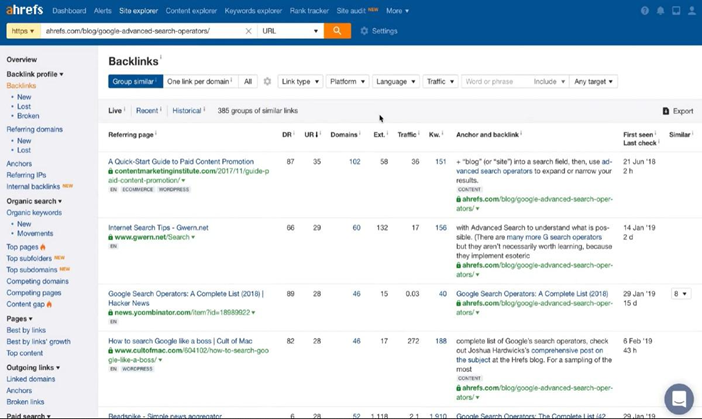Every SaaS business owner or marketer aims for business growth. That growth can be measured using various metrics, including organic traffic, the number of qualified leads generated, and conversion rate. SEO is an effective way to boost those metrics.
A solid SaaS SEO strategy can help you raise brand awareness and generate more qualified leads. In fact, SEO is one of the most effective marketing tactics for software companies.

Source: Uplift Content
SaaS SEO is the process of increasing organic traffic to your SaaS website through on-page, off-page, and technical enhancements. Here's what each process involves:
- On-page SEO: Optimizing content, keywords, internal links, images, and HTML tags
- Off-page SEO: Building backlinks, posting guest content, promoting on social, and listing on relevant platforms (e.g., Google Places)
- Technical SEO: Optimizing page speed, site structure, indexation, and structured data
In this article, we'll summarize SaaS SEO into three pillars that will help you rank higher.
1. Keyword Research
Keyword research is one of the most critical steps in any SEO campaign, and not just for SaaS businesses. A good keyword research process sets the stage for a successful campaign.
The process helps you identify the relevant keywords your target audience uses when searching for topics related to your software.
SaaS SEO requires you to do more extensive keyword research than for other industries. Think about e-commerce, for example: Most online stores will target only keywords with the highest buyer intent. Moreover, those stores will add target keywords only in the product descriptions. E-Commerce stores don't usually have blogs.
For a SaaS company, however, you need an extensive keyword list for the entire customer journey. That's because content marketing—blogging in particular—is instrumental for SaaS. You'll need to optimize your blog posts for the right keywords to rank higher and bring in more qualified traffic.
The good news is that keyword research is fairly easy thanks to SEO tools. Ahrefs, Moz, SEMrush, and Ubbersuggest are among those that can help you identify target keywords.

Source: Ahrefs
There are various ways to approach the keyword research process. You could start by entering your target keyword and finding other related keywords and their search volume; or, you could reverse-engineer your competitor's SEO.
The tools mentioned allow you to paste your competitor's URL into the search field to see all the keywords they're ranking for. The dashboard will even show your competitor's featured snippets and the keywords they're bidding on for paid search campaigns.
Creating a list of keywords is only the first step in your keyword research process. The next step is uncovering the search intent behind those keywords.
When you start a business, it's critical to know what influences organic searches. Only after you've uncovered the search intent will you be able to create the right content that will rank better and retain site visitors.
There are four major types of search intent:
- Navigational. The user is looking for a specific website—for example, "HubSpot CRM" or "Slack login."
- Transactional. The user wants to purchase something. The search term may include "buy," "coupons," and "discounts." For example, "HubSpot CRM discounts" or "Slack coupon codes."
- Informational. The user is searching for particular information around a certain subject—for example, "how to improve customer interactions and relations" or "how to boost remote team productivity." Informational keywords are great for attracting organic leads to your marketing funnel.
- Commercial. The search query shows purchasing intent, but the user hasn't made a final decision. For example, "best CRM software" or "HubSpot versus Zoho CRM."
How do you know the search intent behind a keyword? Simply search the keyword on Google and analyze the types of organic content that rank for it.
For example, if you search "best CRM software," you'll notice that most of the ranking pages are product comparisons. That's because the keyword has commercial intent. Therefore, you'll need to create a detailed product comparison guide to target that keyword.
2. SEO-Friendly Blog Posts
SEO-friendly blogging is a must for every SaaS business. It's is your best shot at introducing prospects to your sales funnel and nurturing them beyond the first subscription or free trial. Remember, you're not just trying to secure that first subscription. You need to minimize churn rate and keep your users subscribed for your marketing efforts to return a positive ROI.
SEO-friendly blog posts must show Expertise, Authoritativeness, and Trustworthiness (EAT). Google's algorithm uses EAT as one of many guidelines to determine whether a particular website or piece of content is valuable enough to rank among the top results.
To ensure your piece of content meets that demand, create high-quality content that's helpful to your readers. The content must also link to other helpful and credible resources. Moreover, it needs to be updated regularly.
You may also want to invite authority personalities to guest post on your website. That'll go a long way toward boosting the reputation of your website.
Writing SEO-friendly blog posts also means optimizing your content for search engines. Here are a few tips to guide you:
- Include your primary keyword in your titles, meta descriptions, and headers.
- Include your primary keyword in your introduction and conclusion.
- Use headings and subheadings (H1, H2, H3).
- Ensure that your own blog posts aren't competing with each other for the same keywords (also known as keyword cannibalization).
- Add internal and external links to your blog posts.
Besides those tactics, you should strive to include valuable visuals, such as images and videos, in your blog content. Google loves rich text, and it's a great way to make your blog pages stand out and keep users engaged.
Although optimizing your blog posts for search engines is critical, it's humans who will consume the content. Therefore, don't focus so much on writing an SEO-friendly post that you forget to make it readable for humans. That hurts the user experience. Instead, scan your content for readability and use rephrasing tools to ensure you're publishing content that makes sense to the intended audience.
3. High-Quality Links
Link-building is an essential part of SaaS SEO. Ideally, you want to earn backlinks from sites with high domain authority. That tells Google that your content is trustworthy. You can easily check the domain authority of a site you want to build a backlink from using SEO tools, such as Moz and Ahrefs.
Fortunately, link-building for SaaS is usually easier than for e-commerce and other industries, mostly because SaaS businesses invest in high-quality blogging. It's much easier to have other sites link to your value-packed pieces of content, compared with online stores that don't have any useful blog content. The caveat, of course, is that you must produce valuable content to secure those backlinks.
The SEO tools mentioned earlier can be instrumental in determining which sites to target for your link-building outreach. Just analyze a competitor's URL and check the websites linking to them.

Source: Ahrefs
But how exactly do you build backlinks? Here are some of the most effective link-building tactics:
- Write high-quality guest posts for authority sites in exchange for a backlink to your site.
- Publish credible research and case studies that other websites would want to reference and link to.
- Build and provide free tools. Other websites will link to those tools, earning you a backlink.
- Build local citations for your business.
- Analyze broken backlinks for your target websites, and ask them to replace those broken links with yours.
Also, monitor your backlinks to make sure you're not attracting links from spammy websites.
* * *
That's how to do SEO for SaaS: Start by identifying your target keywords. Next, create high-quality content that's both user and SEO-friendly. Finally, build high-quality backlinks to boost your rankings.
SEO is a long-term game. It takes some time for SEO to produce results. The good news is that the ROI increases significantly as the SEO results compound.
More Resources on SEO Strategy for SaaS Businesses
Five Powerful PPC Tips for SaaS Companies
Your B2B Website Power Page: Seven Must-Have Ingredients
How to Position Your B2B Brand for Search: Garrett Mehrguth on Marketing Smarts [Podcast]




